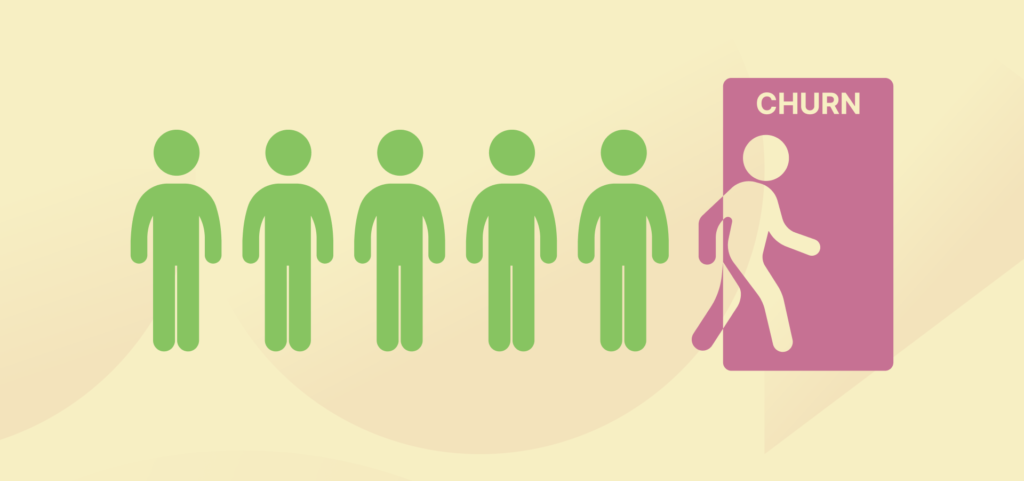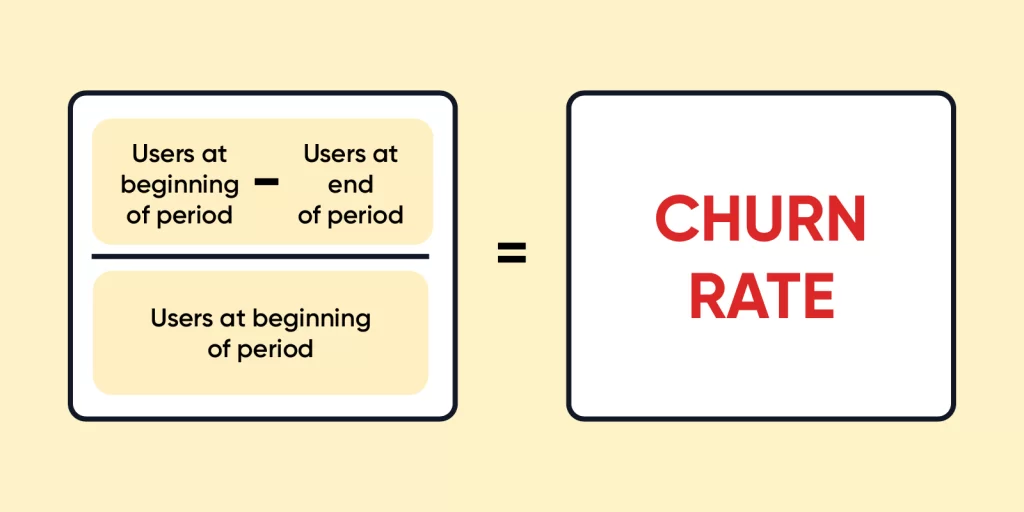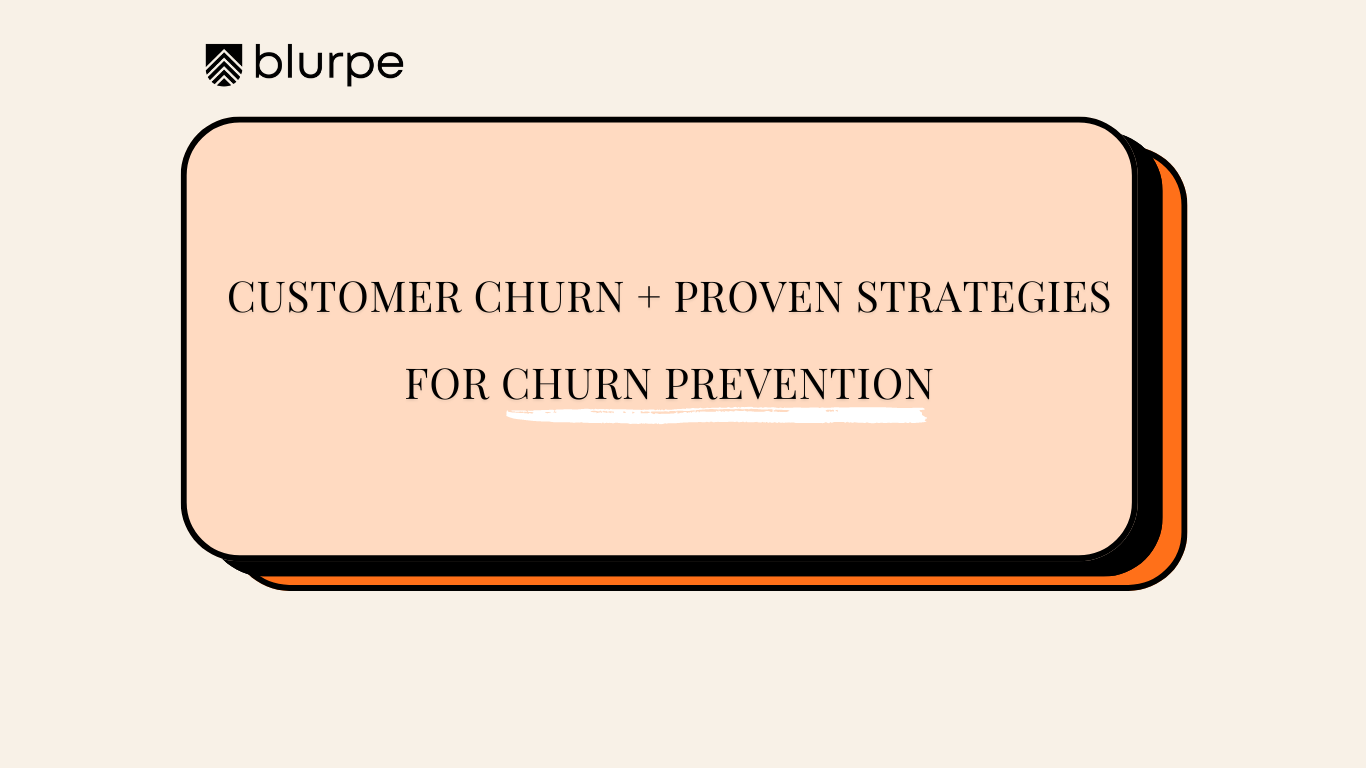Let’s be real with you. You WILL experience customer churn. Every business has. What differentiates the businesses that go down the drain and those that don’t is simple: Churn Prevention. Welcome to CHURN 101. This article will explain what customer churning is, teach you how to analyze your customer churn rate and show you effective strategies to reduce it.
NOTE: You’re here to understand how to stop customers from leaving you. Leaving (Churning) without reading this article to the end defeats that purpose. See you at the end.
What is Customer Churn?
Customer churn also called customer attrition is simply customers leaving your business or stopping usage of your service. If that triggers a painful memory, we’re sorry. All the more reason you have to reduce the rate of those who go. Business experts define it as the loss of customers compared to the total number of customers over a specified time. This makes it a crucial metric that directly affects your business’ revenue and growth.
If you have a large percentage of your customers leaving, it means your business is losing money. We don’t want that now, do we?
Two types of churning categorize your customer’s exit from your product or service.

Different Types of Churn
- Voluntary Churn: Customers decide to stop using your business, most times because they’re dissatisfied with your product or service, or support system or they just simply found a better alternative.
- Involuntary Churn: This is when a customer churns due to reasons beyond their control. It could be issues with their payment details, bank errors, declined transactions and some other common causes.
Why Are Your Customers Churning?
The best way to know is to ask them. You can do this by setting up a survey targeted at churned customers. Assuming general reasons will do more harm than good because you can’t fix what you don’t know. But to keep you abreast of popular reasons why customers churn, here are some general ones:
- Bad onboarding
- Poor customer service
- Better offers from competitors
- Zero customer engagement
- Terrible product or service quality
- Bad customer service
- Bad User Experience
- Unmet expectations
- Pricing
N.B: These reasons are centred around voluntary churn because in most cases, involuntary churn is easily manageable.
How to Calculate Your Churn Rate
Calculating your churn rate is straightforward. It is the number of customers lost over a period divided by the total number of customers you amassed at the start of that period. Here’s a simple formula:
Churn Rate
=
Number of Customers Lost During a Period
______________________
Total Customers at the Start of the Period
X
100
Here’s a more descriptive example:
Say you started February with 500 customers and lost 50, your churn rate within one month would be 10%.
Still finding it hard to calculate your churn rate? Try this Churn Rate Calculator

Tools To Track Your Churn Rate
To lower your churn rate, you must adopt a predictive approach. You are not tracking churned customers. Rather, you are keeping track of customer behaviour to gather insight into behavioural patterns. This helps you identify customers who are most likely to churn, giving you the upper hand to initiate operation “Churn Prevention” (or Customer retention).
These tools make it easy to track and analyze churn:
- Customer Relationship Management (CRM) systems: These software help you manage customer interactions and data. Some helpful CRMs include Salesforce, Hubspot, Zoho, Close, ActiveCampaign, Dyamics365, and Zendesk.
- Analytics Platforms: Tools like Google Analytics, Mixpanel, Hotjar, Crazy Egg, and Clever Tap can provide insights into customer behaviour and trends.
- Surveys and Feedback Forms: You can just ask. Using direct feedback from customers can help you pinpoint the exact reason they’re leaving (from the exact source). You will find these survey tools useful: Survey Monkey, Type Form, Google Form, Alchemer, and Trust Pilot.
How To Identify Churn Patterns and Trends
If you were going to leave a party, there will be signs. It’s sort of the same with customers who are gearing up to leave your product or service. Patterns such as low engagement, inactivity over a set period, visiting the cancellation page of your product or app, Unsubscribing from your newsletters, zero support tickets over a set period (not all support tickets are bad after all), frequent card decline signal, reduced purchase. The list is long and differs for various brands, SaaS or business models.
These are what you should know:
- The important thing is to understand that you define what churn patterns are for your business and you get to work with identifying them from your customer behaviours.
- Pinpoint the stage of churn. Is it early stage/onboarding phase churn or late stage? The early stage could signal a problem with your onboarding presence or value proposition while late-stage points to poor customer satisfaction, service or a better competitor.
- Identify the cause of the churn. If a customer has visited the “delete account” or cancellation page more than once (depending on what you identify as your churn signal), then there’s a problem. You want to find out what the problem is and solve it for that customer
- Analyze in segments. First, it saves time. Next, it gives you deeper insight into the traits of people you grouped. It is easier to spot churning trends when you can tell if it is demographic, gender, or revenue-induced. Think of it as easily spotting a pack of wolves approaching you faster and better than you can spot a single one.
To identify churn patterns, all you have to do is look into the data gathered by your tracking tools. Identifying trends early on can help you target your efforts more effectively and start preventive campaigns to retain your customers.
Strategies For Churn Prevention
Prevention is better than cure. That’s not just the case for your health but for the well-being and sustenance of your business. Customer churn prevention if done well can be the difference between you and the business lamenting about the loss of customers. Not to mention, churn prevention is much cheaper than customer acquisition.
These strategies will help you reduce your customer churn.
Enhance Customer Onboarding
Poor onboarding ranks as the third highest reason for customer churn (source). First impression matters a lot. Keep your onboarding process simple and devoid of complexity. You want your customers onboarded as fast as possible and if this is impossible then provide substantial support during the onboarding journey. A recorded in-app/website video to aid the long onboarding process is highly recommended. A smooth onboarding process can set the tone for a customer’s entire experience with your company.
Engage in your customer’s journey with your product or service
From the moment you acquire a customer, take an active part in every sector of their life cycle with your product. Make use of touch points like emails, in-app messages, SMS and other channels to engage your customers. Send announcements, promotions, and even event opportunities related to your product their way. This makes your product an active part of your customer’s lives. Out of sight, out of mind. That shouldn’t be you.
Give discounts and incentives
You can employ discount as a re-engaging tactic to resuscitate a customer on the verge of churning. Present a juicy offer that will have your customer turning 360 on their inclination to churn. As far as discounts go, you can have “Get 10% off your next purchase with us” or “It’s raining special free deliveries. There’s one for you”. The combat is real to keep your customers to yourself.
Regularly collect feedback
This might sound like the simplest but it is one of the most overlooked. Taking feedback helps you work on areas that cause dissatisfaction to your customers and can otherwise result in a massive churn. Feedback received would inform your product modification to make it better suited for your customers. Plus customers love it when you listen to them.
Provide Consistent Customer Satisfaction
The chances you would ditch a brand that satisfies your needs consistently are slim. On the flip side, what happens is that you become a loyal customer and an advocate. This strategy is the sure-fire method to keep your customers from thinking about churning. From product usage to UX experience, and customer service; you want to keep all touch points actively satisfactory for your customers.
Provide Exceptional Customer Service
Has it ever happened to you that you just encountered terrible service from a business? You are fuming already and have sworn that as soon as you resolve the issue, it’ll be the last time you engage the product. So you pick up your phone to either call or text support and at the end of your exchange with the support personnel, you’re smiling? That’s it right there! Great customer service can turn a dissatisfied customer into a loyal one. Invest in your support team. Ensure that tickets are resolved as soon as possible and escalated to the right quarters at the appropriate time. Train your customer support team on empathetic communication and handling customer issues.
Personalize Customer Experience
Tailor your marketing messages and offers to suit your customers’ behaviour and preferences. If a customer loves to buy dresses, offer a discount on the sizzling red Valentine gown.
Conclusion
A high churn rate spells doom for the growth and sustainability of your business. The best way to understand and prevent it is by understanding customer behaviour. Using the insights to curate strategies that will significantly prevent churn and effectively improve retention. Which strategies will you be implementing?
Don’t hesitate to share your experiences or share this article if you found it helpful!
Did you love this article? Share so more people can learn about Customer churn and how to prevent it. 👍 